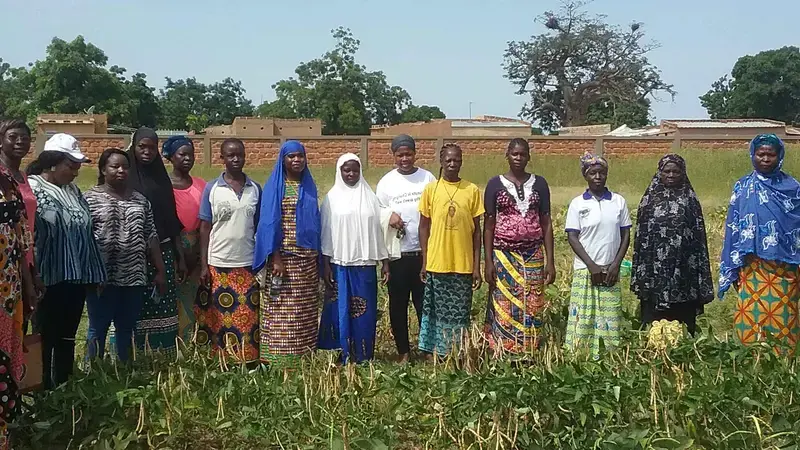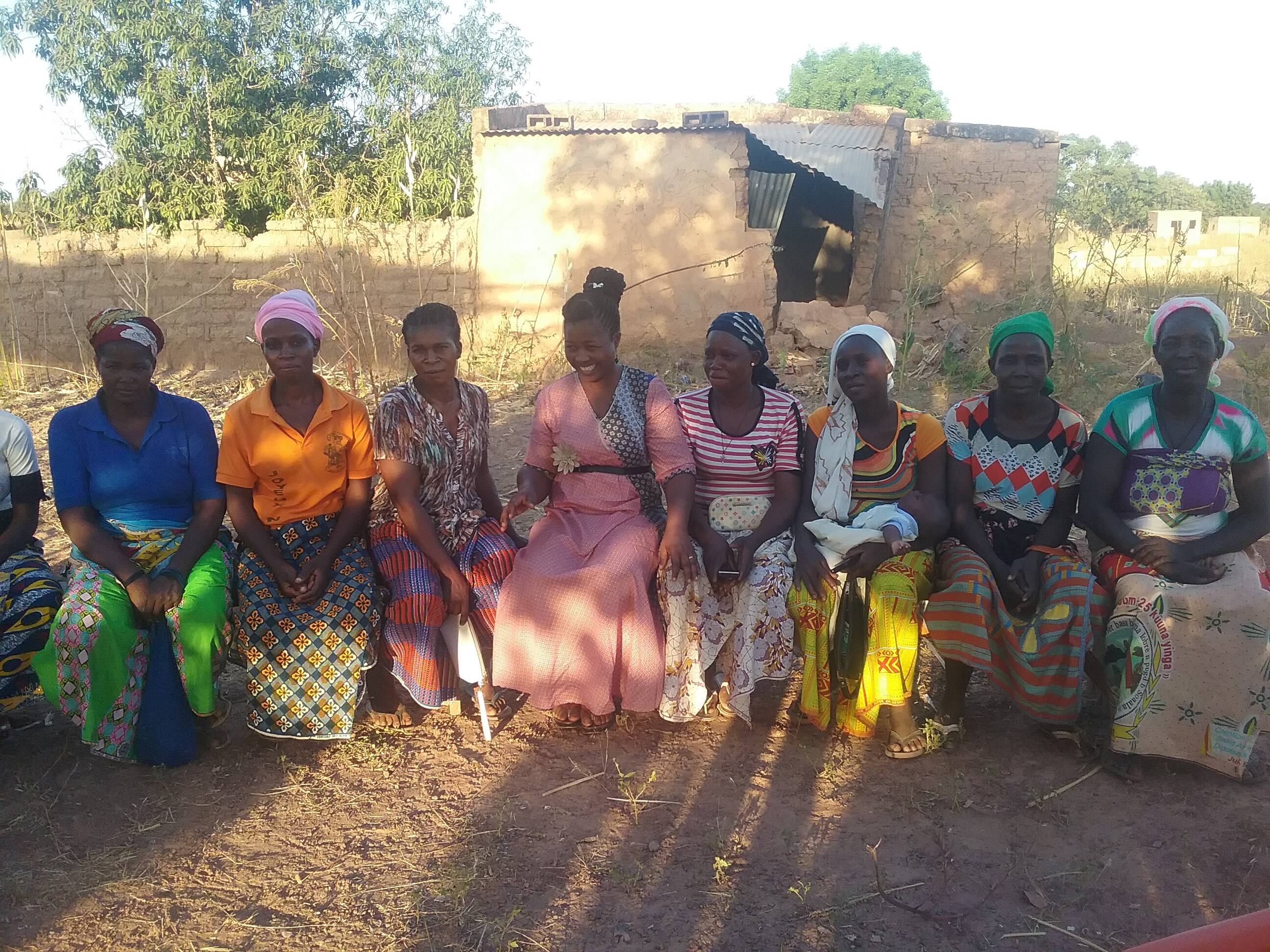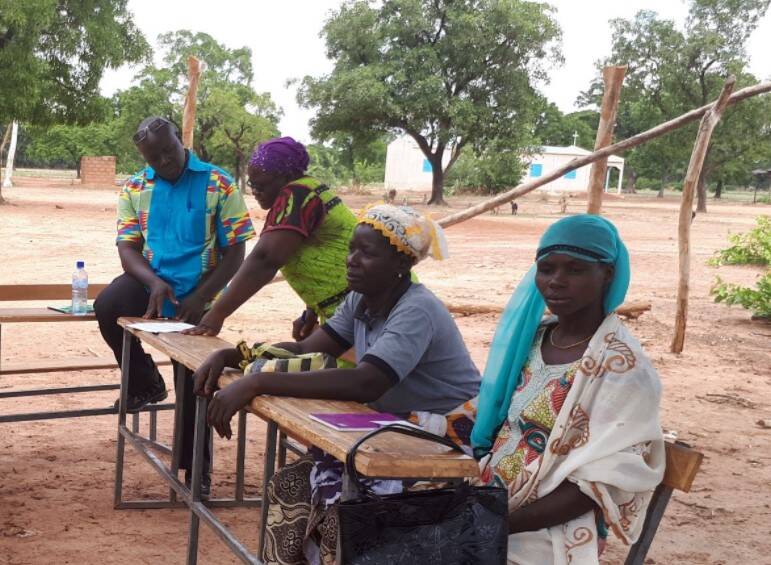Beyond gender - Cowpea production in Burkina Faso

Authors
- Mrs. Bezaiet Dessalegn, ICARDA's Social Sciences Specialist
-
Dr. Boundia Alexandre Thiombiano, General Director of Burkina Phosphate Exploitation Company (SEPB), Ministry of Agriculture, Hydro-agricultural Development and Mechanization
-
Dr. Eveline Sawadogo-Compaore, Social Scientist, Sociology and Social Policy, Environment and Agricultural Innovation Systems Specialist
In the Western Houet region of Burkina Faso, a landlocked country in West Africa, agriculture is the leading income-generating activity for rural populations.
Across the area’s plains and plateaus, agro-pastoralists cultivate staple crops like sorghum, millet, rice, groundnuts, and cowpea - a legume well suited to low rainfall and sandy soils.
In Houet, ICARDA conducted a gender study funded by the CGIAR Research Program on Grain, Legumes and Dryland Cereals (GLDC) to untangle various determinants that drive cowpea’s productivity, a crop cultivated mainly by women and central to their livelihoods.
Mixed research methods were used to collect and analyze relevant data, with intersectionality at its core. Intersectionality is an analytical framework used to understand how gender intersects with other axes of social differentiation such as class, caste, race, culture, and ethnicity (Elson 2018).
Through this approach, the scientists explored the compounded effect of simultaneously belonging in different sub-groups.
Opportunities and decisions regarding crop choices, adoption of improved agricultural practices, access to input and output markets, credit, extension services, and possibilities for wealth generation and accumulation all depend on those combined factors.
In Houet, a person’s access to land, inputs, types of crops, and ownership is often pegged to their sex and level of wealth. By studying these fine-grained dynamics, the researchers identified the priority target group who would most benefit from cowpea’s increased productivity - low and middle-income native and migrant women.

In this region of Burkina Faso, rural populations do not form a homogenous group, far from it. The first element of differentiation among the people is class: subsistence farmers do not enjoy the same privileges as large-scale farmers.
The same is true based on origin: native populations are better off than migrants originating from other Burkinabe regions or Mali, and differentiation between gender is also crucial.
Based on these criteria, lines determining social inclusion or social exclusion are drawn in the sand.
Migrants who have ‘temporarily’ settled in the area require special permissions to use land and grow crops. They usually aren’t allowed to cultivate trees of long-maturing crops to avoid future disputes with the locals surrounding land ownership matters.
Large-scale farmers are best placed to purchase land and access subsidized inputs, credit, and markets, while subsistence farmers rarely get such advantages.
Women and men’s roles are unsurprisingly very controlled in the community. Regardless of ethnic background and class, women bear similar domestic and agricultural responsibilities. Women cannot inherit land either, because they are expected to move away from their household to their husband’s family home after marriage.
Instead, women are granted ‘temporary’ access to small plots of land, usually located on the margins of the family farm. There, they cultivate groundnuts, sesame, cowpea, millet, vegetables, and other short-maturing, less labor-intensive cash crops.
These crops are crucial to generate extra income, allowing women to cover their needs and meet basic household food demands.
But differentiation among women based on ethnic background, educational level, and class status firmly dictate what they can and cannot do, which crops they’ll grow, and how much labor will be involved.

Migrant women have the least access to arable land, improved seeds, information, and inputs necessary to boost the productivity of their crops. The study also found that wealthier native or migrant women whose spouse is a large-scale farmer are generally less keen to cultivate cowpeas.
Untangling this complex system through intersectional analysis enabled the scientists to explore the key drivers behind enhanced cowpea productivity in the area.
A multipurpose legume crop, cowpea offers nutritional benefits, restores soil fertility, and boosts women’s income. In Houet, although livestock is an integral component of the agricultural system, protein intake is derived chiefly from dried river fish, groundnuts, cowpea, and soybean.
The study’s preliminary findings indicate that cowpea is particularly important for migrant and native women from poor and middle-income families, who rely on it as a good source of protein and income to cover school fees and household supplies.
Native and migrant women from a poorer socio-economic background are the leading target group interested in enhancing cowpea’s productivity.
These women are redoubling efforts to open new marketing avenues for cowpea by re-purposing the legume into pasta, biscuits, and cakes. As a result, they are transforming cowpea from a mere subsistence crop to a full-blown cash crop.
By identifying the sub-group who most benefits from better cowpea yields through an intersectional approach, the research findings will inform agricultural extension services to devise targeted delivery systems to sustainably increase cowpea’s adoption in Houet.
These findings will also ensure that the solutions presented meet men and women farmers’ specific needs, rather than considering them a homogenous group with similar priorities and capabilities.
---------------------------------
This study has been funded by the CGIAR Research Program on Grain, Legumes, and Dryland Cereals (GLDC).
